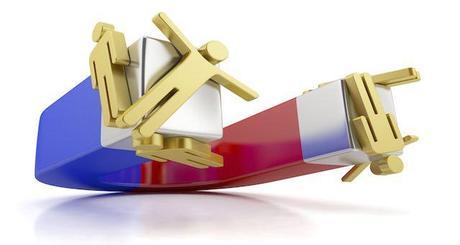
What do a bullhorn and a magnet have to do with marketing?
The bullhorn represents the old-fashioned, broadcast style of “outbound marketing” in which attention is purchased (or rented) through traditional media outlets. The magnet symbolizes the newer method of “inbound marketing,” in which attention is earned.
The two stark visual metaphors were used by Hubspot CEO Brian Halligan at a recent event to illustrate the fundamental ways in which the two schools of marketing thought differ.
Outbound Marketing On Its Way Out
The decline in outbound marketing corresponds to the shift in consumer behavior as people gain more control over how they receive information. Nearly all consumers now go online to search for information about a product before actually making a purchase (whether online or in-store). According to Halligan, inbound marketing is a way to transform marketing to match the way consumers live today.
Inbound marketing is about earning (rather than buying) attention through engaging, valuable content. Some of the most effective inbound marketing tactics include content marketing and social media participation.
Creating Marketing Assets
Halligan urged his audience to think of each piece of content as a permanent asset that your business owns. Content can include articles, blogs, podcasts, videos, presentations, webinars, reports, ebooks, white papers and infographics.
Content Improves Search Results
Inbound marketing also doubles as a search marketing strategy—the more content you create, the better your search rankings and the more likely your prospects will be to find your business.
As content is shared through social networks, the reach can grow virally, increasing its visibility. Once your content gets shared by blogs and social networks, links can be created back to your company website or blog page. These “backlinks” enhance search engine optimization efforts, dramatically improving your site’s search engine page rankings.
When you create something of value for your audience, you create a connection that is more likely to lead to a sales conversion. Consequently, inbound marketing costs less, and generates a better ROI than outbound marketing.
